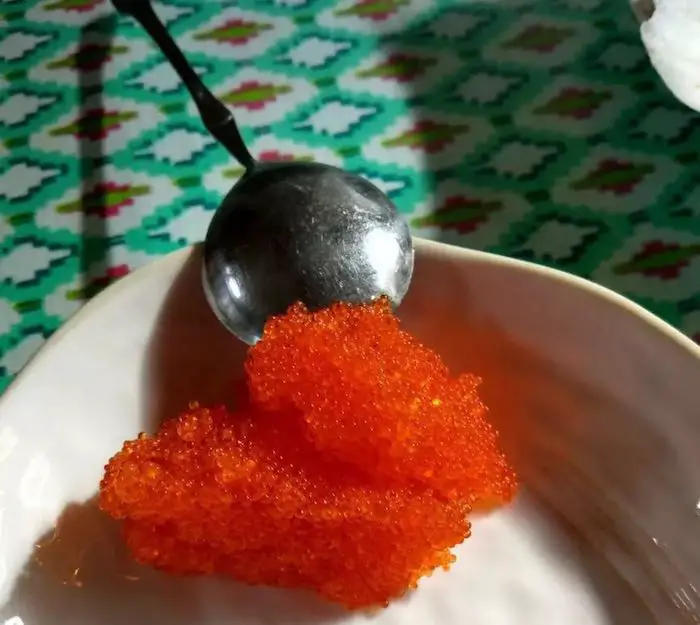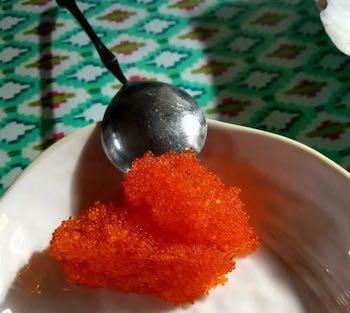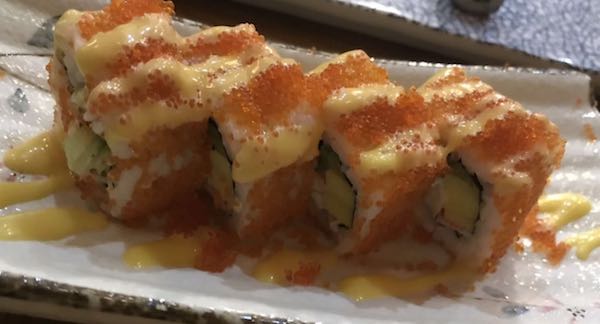We are reader supported. When you purchase through links on our site, we may earn an affiliate commission. Also, as an Amazon affiliate, we earn from qualifying purchases.

If you are a true sushi lover, you probably have encountered some various types of common fish eggs that sometimes go within sushi. Masago is one of them. Masago consists of capelin eggs, fish in the smelt family. Now, you’ve bought your dose of masago but not sure how long does it last?
Well, if you handled and stored it correctly,
If you have other questions about storing and shelf life of
How Long can Masago last
Masago like this on Amazon, capelin eggs harvested from female capelin fish, is a common ingredient in sushi and often added in other dishes because of its visual appeal. Masago is typically harvested in the North Atlantic, while Iceland is the biggest manufacturer of masago and they are processed mostly in China, Taiwan, and Japan.
More information’s about masago you can find in our article.
So, now that you’ve bought you a portion of masago and are ready to use it in sushi rolls, you are confused about what to do and how long will it last?
Firstly, if you have fresh masago, you should anyhow store in the coldest part of your refrigerator at 28-32F for maximum usability of the masago.
Next, if you have frozen masago, keep it until you are ready for using it and once you open it its shelf life is from 4 to 5 days maximum. It’s good to know that unlike other fish delicacies like caviar, masago holds well frozen.
If you keep with our guidelines about handling and storing masago, you can use it for up to one week from the harvest date if you keep it refrigerated to one year when it’s frozen. Plenty of time for your sushi experiments!
How to store masago
Mostly you will use masago in frozen form, except if you will be lucky enough to find fresh masago. And it’s good to know how to store it properly. You don’t want to buy it and then that it goes to waste.
When frozen, thawing it, again and again, is not a good idea – it can rapidly deteriorate.
A better idea would be to thaw it once and then separate in small pieces that you will refrigerate. That way you will need to pull just the tiny bit you will use, not the whole thing again.
How can you eat Masago
Masago is a delicious ingredient that you can incorporate in your diet in numerous ways. Of course, because of its semi-crunchy texture and salty flavor, it is a perfect bonus to Asian dishes.
But, masago can be used in many other ways and many Western dishes. Be careful with the doses – masago is high in salt, and you only need a small amount in your meals.
Here are some of the ways you can add masago to your everyday meals:
• Enjoy masago alone. You don’t need to add it anywhere, just grab a spoon and enjoy in masago salty flavors.
• Combine masago with crackers. This is a usual way of eating caviar, and it’s also a great way to indulge in masago. Simple and inexpensive snack.
• Don’t have any crackers? That’s fine – use cheese and fruit that you have at home and combine it with masago. This can serve as a tasty appetizer.
• Make your homemade masago sushi. Masago fits perfectly as a topping for sushi rolls.
• Another idea is that you mix masago into wasabi or spicy mayonnaise to give your sushi rolls a new flavor.
• If you like eating cooked fish, you can add masago to that meal as well.
• Add masago to your salad. If you can eat fish in a salad, why not try adding some fish eggs in the same way?
• Masago is an excellent addition to rice. You can use any rice to do this, but short-grain sticky rice will be the best to pair it up with.
• Add a spoon of masago to noodles. It will be a delightful combination, especially if you use Asian noodles.
• Want to prepare refreshing dips? Incorporate some masago into them. This way you will come up with some surprisingly tasty flavor commendations.
• Last but not least – be creative! Add masago in anything else that you want, and only the sky is your limit. Use your creativity and imagination and mix your meals with masago.
Health benefits of masago
Now that you know how to store your masago and for how long, it’s time to get familiar with some health benefits of eating masago.
1. Masago is low in calories
For anyone that is looking for low calories and carb meal – masago is your answer. It has lots of protein and a minimum amount of fat and carbs – making it a great supplement to healthy low carb nutrition.
2. Masago is an excellent source of Omega 3 fatty acids
Omega-3 fats are polyunsaturated fats with many health benefits, and masago is full of omega 3 fats. These fats help regulate inflammation, control blood clotting and even reduce depression.
Incorporating masago into your nutrition will include sufficient omega-3 fatty acids, that will contribute to many health benefits. Commonly, western diets do not contain enough omega-3 fatty acids and adding foods like masago will help you keep your menu balanced.
3. Rich source of protein
Even though masago is tiny in size, it is a powerful source of protein. And as you probably know, protein is essential for your body to function and it helps with increasing your metabolism and feeling fuller after eating.
Single ounce (28 grams) of masago has 6 grams of high-quality protein – for comparison, one large egg has the same amount. Add masago to your diet; it will enrich you with proteins and will help you stay satisfied.
4. An organic source of selenium and vitamin B12
Moving on to more health benefits. Masago is a natural source of selenium and vitamin B12. Selenium is a mineral that is a powerful antioxidant in your body. Selenium reduces stress and plays a vital role in your whole immune system.
Moreover, masago is high in vitamin B12, which is crucial for nerve health and your energy. That’s why adding masago to your diet, will get you a healthy source of selenium and vitamin B12. See more
5. Low amount of mercury
Another significant advantage of eating masago – it has a low amount of mercury. Because capelin is a small fish, it has the lowest levels of mercury, unlike some larger fishes.
What does that mean for capelin eggs? It means that both the fish and eggs are low in mercury. For this reason, masago fish roe can be safely consumed by anyone who wants to minimize mercury exposure.
Related Questions
1. Why is Masago sometimes in different colors?
Now you learned all there is about masago, you are ready to try it. But when you ordered it is green or black? And you know its color is yellowish-orange. How is that possible?
It’s possible, and the difference is only in added ingredients. For example – green masago is usually infused with wasabi, black masago might have squid ink in it, and red masago probably has beet inside.
Adding these supplements can definitely enhance flavors and colors but also add enjoyment of eating masago. Super-vivid colors will put a different appearance to the overall dish.
2. Is there any downside of eating Masago?
Since we have covered all the advantages of eating masago let’s talk about a few possible downsides. All of them can be reduced with careful shopping.
• Allergic reaction
Since masago is a seafood product, those who are allergic to fish and shellfish should surely avoid it. Certainly, if you are allergic to roe or fish in general, you will not eat it and here is where you need to be extra careful.
• A high amount of sodium
Masago is an excellent source of a lot of healthy nutrition, but it contains a high amount of sodium. Be cautious when eating masago – keep your masago intake moderate and don’t overdo the sodium in your diet.
• Nasty additives are often added
Sometimes, besides additives like wasabi or beet, some other dangerous and unhealthy additives are included too like MSG (Monosodium glutamate). If you want to avoid nasty additives like these, you need to be selective of the roe you are eating and conscientiously check the ingredients.
Source:https://draxe.com/masago/
3. Where to buy Masago?
It’s no longer the time when it’s difficult to find any ingredient for Asian cuisine in Western stores. Asian ingredients are becoming more and more known, used and available.
There is a pretty high chance that you can buy masago at your grocery store or gourmet stores. If not, go and find a store that is specialized in Asian products.
If you don’t have any luck with finding it in your stores – go online! There are many purchasing options for masago, and one of them is popular site Amazon which also has other types of roe.



